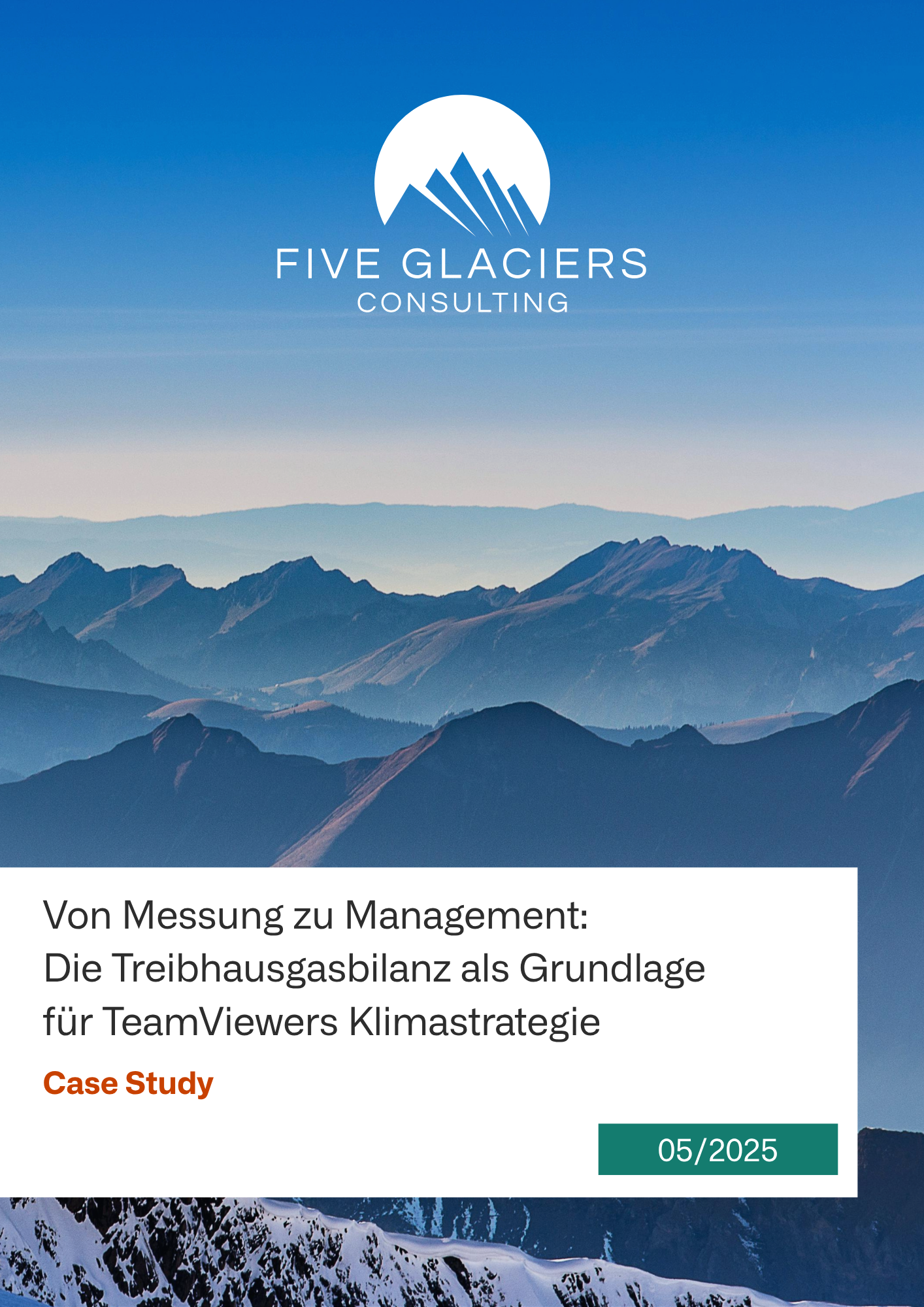
The carbon footprint for companies is also known as the corporate carbon footprint (CCF). With the Corporate Sustainability Reporting Directive, or CSRD for short, the preparation of a carbon footprint is gradually becoming mandatory for most companies in the EU, and from 2026 also for many medium-sized and small companies. Five Glaciers Consulting determines the ecological footprint of your company and takes all important regulations into account when preparing your carbon footprint. Based on the world's leading standard, the Greenhouse Gas Protocol, we identify the main sources of greenhouse gas emissions in your company and in your value chain.
How extensive and challenging the preparation of a carbon footprint is for companies depends on many factors, e.g. the sector and the size of the organization. In any case, there are certain organizational and structural process steps that need to be taken.
The European Sustainability Reporting Standards (ESRS) also set clear guidelines for the form of reporting. Structured data collection in particular, an important basis for calculation, is a challenge for many companies.
We create a transparent and efficient carbon footprint for your company along the entire value chain - naturally taking into account the European Sustainability Reporting Standards (ESRS) and the GHG Protocol.

The carbon footprint is a valuable basis for developing your future-oriented climate strategy. It is an important cornerstone on which you can build - for example, by developing clear climate targets, assessing company-specific climate risks or preparing a life cycle assessment (LCA). We would be happy to discuss sensible next steps and sustainability measures with you.

Develop and implement science-based targets with us - based on recognized standards
learn more


Assess and manage climate risks - as a basis for targeted adaptation to climate change
learn more


Optimize your products throughout their life cycle - we accompany the evaluation of your environmental impact
learn more


Find out how companies have not only created their carbon footprints with us, but also increased their competitiveness.
TeamViewers Weg zu wirksamem Nachhaltigkeitsmanagement auf Basis fundierter Klimabilanzierung und Beratung durch Five Glaciers Consulting.
Scope 1: Direct emissions caused by the company's own activities (e.g. from its own heating systems or vehicles).
Scope 2: Indirect emissions caused by the consumption of energy (electricity, heat).
Scope 3: Other indirect emissions caused by upstream and downstream supply chains, e.g. purchased goods and services, business travel or the use of products sold.
The CCF is based on the Greenhouse Gas (GHG) Protocol and comprises three scopes:
A precise CCF calculation requires consumption data on energy (electricity, heat, fuels), production processes, transportation and logistics activities, business trips, purchased goods and services as well as disposal processes.
The update should take place at least annually in order to measure progress in reducing emissions and to meet new regulatory requirements. Many companies also integrate the CCF into their annual sustainability reporting.
Effective measures include switching to renewable energies, increasing efficiency in production, electrifying the vehicle fleet, optimizing supply chains and sustainable procurement. Strategic anchoring in the company and realistic reduction targets in accordance with SBTi are essential.
ESRS E1 (Climate Change) of the CSRD (Corporate Sustainability Reporting Directive) requires companies to quantify their direct and indirect greenhouse gas emissions and disclose reduction targets. The CCF serves as a basis for presenting emissions transparently and fulfilling regulatory requirements.


Let's talk about your footprint! We look forward to getting to know you.
Phone: +49 174 1305766
E-mail: info@fiveglaciers.com
Direct appointment booking
